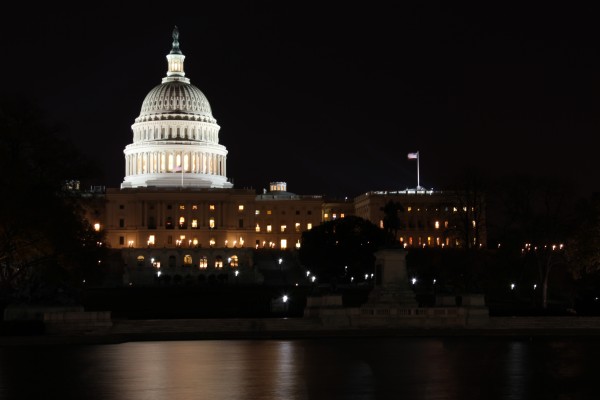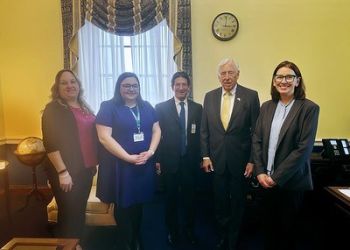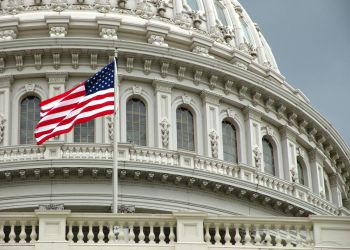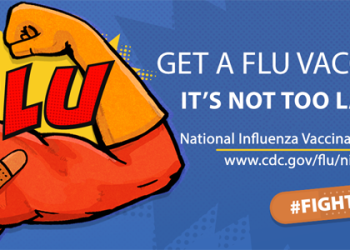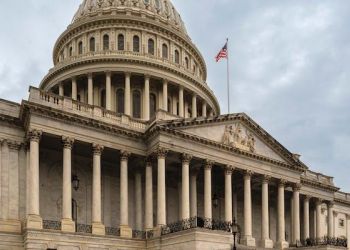This letter was sent urging Congress to provide substantial additional investments to the governmental public health system at all levels (federal, state, local, tribal and territorial), as well as at least $3 billion in funding designated specifically for local health departments so that they can continue to lead on the response in the short term, as well as over the long-term response on through recovery.
Dear Leader McConnell, Speaker Pelosi, Senator Schumer, and Representative McCarthy:
Thank you for your support of the public health response to date as we continue to fight the 2019 novel coronavirus pandemic (COVID-19). The virus can affect any corner of the country and, as we have seen, spreads rapidly without sufficient public health structures in place, including robust, timely testing, contact tracing, and supportive services, and coordination across the federal, state and local levels. Unfortunately, as we have seen in far too many regions, we still have a long way to go to shore up our public health system to achieve these goals and slow the spread of transmission. The National Association of County and City Health Officials (NACCHO) and the nearly 3,000 local health departments across the country implore you to provide additional emergency supplemental funding to support local health departments in their fight against COVID-19.
NACCHO greatly appreciates Congress coming together to quickly provide funding in the spring to help support the governmental public health response to COVID-19. Since February, public health professionals have been working day in and day out to protect the American people. Currently, testing delays and supply issues are hampering the response, and there is not the necessary contact tracing and supportive services in place across the country to get the virus under control. Health departments are attempting to prepare for fighting this pandemic for the foreseeable future. In addition, the upcoming flu season likely will put additional strain on an already strained public health and health care system. This all points to the need for additional, long-term resources being necessary to get and keep the virus under control for the health and economic well-being of the nation.
Unfortunately, as this pandemic continues to grow and affect every corner of our nation, local health departments continue to struggle to find the resources to support their response efforts. The funding that has already been appropriated by Congress has had a variable reach into local public health agencies. Some health departments have not gotten a single dollar in federal support for their coronavirus response, while others have gotten so little that they could not even support the hiring of one full time employee. At the same time, staff who were previously diverted to the COVID-19 response must return to their other public health duties, including immunization, food safety, vector control, opioid prevention, and other efforts, as those challenges did not disappear with the rise of COVID-19. Moreover, due to the economic impacts of the virus on local and state tax dollars, local health departments are being asked to plan for upwards of 25% budget reductions, while furloughs are already taking place.
Therefore, NACCHO calls on Congress to provide substantial additional investments to the governmental public health system at all levels (federal, state, local, tribal and territorial), as well as at least $3 billion in funding designated specifically for local health departments so that they can continue to lead on the response in the short term, as well as over the long-term response and through recovery.
This is critical as all communities are either battling outbreaks of the virus or at risk for an outbreak, however there are inconsistencies across the country with federal response dollars making it to local health departments to support this response. Therefore we also request that the federal government publicly track any disbursement of federal COVID-19 response funds down to the local health department level to identify best practices as well as better understand the challenges of getting money to the front lines of the response.
Beyond general baseline funding for all levels of the governmental public health system, there are additional resources needed for specific aspects of the response in order to help ensure that Americans can safely dial back strict social distancing and other restrictions, including:
Contact Tracing NACCHO requests at least $7.6 billion in emergency supplemental funding to local, state, territorial, tribal, and federal public health agencies to support a workforce of contact tracers. A three-tiered approach to building the national contact investigation workforce is necessary in order to recruit the people public health agencies need to rapidly build capacity and complement extant expertise in every public health agency.
We have developed a three-tiered approach to address this issue:
1. Tier 1 at least 100,000 Contact Tracers: at least $4.8 billion.
2. Tier 2 at least 10,000 Disease Intervention Specialist (DIS) Supervisors: at least $1.3 billion.
3. Tier 3 at least 1,600 Epidemiologists: at least $240 million.
We are also requesting additional funds as follows:
• Technology and training for the contact tracing workforce: at least $700 million
• Medical Reserve Corps (to facilitate volunteerism in health departments): at least $100 million o The HEROES Act authorizes $31.2 million in FY2020-2021 for the Medical Reserve Corps (MRC) but does not include appropriation of funds. An average award of about $100,000 per MRC unit would support one additional paid staff person and other resources to facilitate volunteerism. The work of MRC volunteers has been essential to the COVID-19 response. For example, Alexandria, VA MRC volunteers provided more than 4,800 hours of contact tracing in three months, equal to a monetary value of over $132,000.
• Public health workforce loan repayment (to help recruit and retain needed health department staff): at least $350 million (see below)
On April 16, 2020, NACCHO released a position paper - Building COVID-19 Contact Tracing Capacity in Health Departments to Support Reopening American Society Safely - with full recommendations on contact tracing and developing a contact tracing workforce. However, since April, cases have spiked across the country and in many states, there will be a heavier lift to track all cases. Moreover, as communities reopen and we quickly approach flu season, contact tracing has become much more complex.
Loan Repayment NACCHO requests that you include the Strengthening the Public Health Workforce Act (S. 3737), introduced by Senators Smith (D-MN) and Booker (D-NJ), including funding to implement the Act, in the next emergency supplemental package. A house companion, the Public Health Workforce Loan Repayment Act (H.R. 6578) introduced by Reps. Crow (D-CO) and Burgess (R-TX), has also been introduced and language authorizing the program was included in the HEROES Act.
The public health workforce is the backbone of our nation’s governmental public health system at the county, city, state, and tribal levels. These skilled professionals are the primary resource necessary to deliver public health programs and services: they lead efforts to ensure the tracking and surveillance of infectious disease outbreaks such as COVID-19, prepare for and respond to natural or man-made disasters, and ensure the safety of the air we breathe, the food we eat, and the water we drink.
Health departments employ full-time nurses, behavioral health staff, community health workers, environmental health workers, epidemiologists, health educators, nutritionists, lab workers and others who use their unique skill sets to do all they can to keep people in their communities healthy and safe. While the current COVID-19 outbreak has raised the profile of public health workers, they have a long track record of protecting our communities out of the spotlight, preventing illness and harm.
The public health workforce was hit hard by the Great Recession, and whereas much of the rest of the public sector workforce has recovered or grown, local and state health departments have not. In fact, local and state health departments have lost nearly a quarter (23%) of their workforce since 2008, shedding over 50,000 jobs across the country. New staff and volunteers are being brought into the field for the COVID-19 response. A public health loan repayment program would provide an added incentive to keep them long term and help ensure that their experience is harnessed and available before the next crisis hits.
Public Health Infrastructure
NACCHO urges Congress to enact $4.5 billion in additional annual funding for the CDC and state, local, tribal and territorial core public health infrastructure to pay for such essential activities as disease surveillance, epidemiology, laboratory capacity, all-hazards preparedness and response; policy development and support; communications; community partnership development; and organizational competencies.
The importance of strong, predictable federal investment in the public health system is even more vital now as the economic impacts of the pandemic are felt nationwide. Local and state governmental budgets, and therefore public health budgets, are likely to be devastated in the wake of COVID-19, possibly for years to come. This will leave our nation even more vulnerable to emerging health risks. By building the core public health infrastructure of states, localities, tribal governments, and territories, as well as the CDC, the nation will be better prepared for the next threat.
Immunization Infrastructure It is imperative that the federal government, in coordination with local, state, tribal and territorial government, as well as public health, primary care physicians, pharmacists, and other health care providers, begin to prepare for the allocation, distribution, and administration of a new COVID-19 vaccine. This important work will be a multi-phase process that requires resources for planning, prioritization, expanding the public health workforce, and close collaboration between public health and existing primary care physicians, pharmacists and other health care providers within the immunization neighborhood to strengthen and enhance our immunization infrastructure and surveillance systems in anticipation of a new vaccine. Health departments have previous experience and expertise in coordinating vaccine distribution over other fields and agencies. They are the bedrock for this system and their expertise must be built upon for the COVID-19 response.
Preparation for a vaccine distribution campaign must begin before a vaccine is ready for dissemination. Concurrently, electronic health record vendors and immunization information systems (IIS) must update and prepare these data reporting systems accordingly with consideration given to expected priority populations and phases of vaccine distribution across the health care system. Public health, primary care physicians, pharmacists and other health care providers in the community should develop plans for managing the volume of procurement, storage, and distribution of ancillary supplies that will be needed for a successful pandemic vaccination effort, such as personal protective equipment (PPE), syringes and alcohol wipes. One can expect that there will be an unprecedented demand for vaccine across the country and across all segments of the population and there will be intense pressure on already fragile and overworked health care and public health systems. An education campaign will also be necessary to allay fears about the vaccine and combat misinformation and distortions by anti-vaccination groups.
In order to support a multi-phase process that must be undertaken in advance of any nationwide COVID-19 vaccination campaign, NACCHO urges Congress to provide at least $3.6 billion in funding through the CDC Wide Activities account for immediate immunization infrastructure support including at least $900 million for local, state, and territorial preparedness and response and immunization program planning and staffing. We have an opportunity now to prepare for the future—these resources are needed now to do just that.
Safety for Public Health Officials
Across the country, in red states and blue states, large metropolitan areas and rural communities, public health department officials and staff have been physically threatened and politically scapegoated. Too many have lost their jobs for trying to protect and defend the health of their community in responding to the COVID-19 pandemic. Many others have stepped down, interrupting their careers, to protect themselves and their loved ones from actual or perceived threats. We are losing expertise, experience, and most importantly, leadership, at a time when we need it most.
More must be done to protect these individuals’ safety, who are being targeted for fulfilling their official duties. At a time when leadership in public health is needed most, our country is losing experienced and tenured public health leaders due to physical and verbal threats, intimidation, and other tactics intended to diminish the response to, and recovery from, this pandemic. During a public health emergency, and especially during a pandemic of this size and impact, public health professionals at all levels of the governmental public health response should be protected. We ask that Congress, working with the U.S. Office of the Surgeon General, ensure local (and state) health officials are minimally afforded the same protections as federal employees when carrying out their official duties as part of the COVID-19 response and as they work on behalf of our country to keep our communities safe and healthy during pandemic. It would also be helpful to clarify that federal funds are permitted to be used to provide security and protect the safety of local public health officials should those steps be necessary.
In closing, NACCHO appreciates your thoughtful consideration of these recommendations and looks forward to working with you to prepare the nation for the next phase in this fight against the COVID-19 pandemic. NACCHO and local health departments look forward to continuing to work with Congress to address this global pandemic and shore up the public health system here at home so that Americans are protected from all public health threats. For additional information, please contact Adriane Casalotti, NACCHO’s Chief of Government and Public Affairs, at [email protected].
Sincerely,
Lori Tremmel Freeman, MBA CEO
